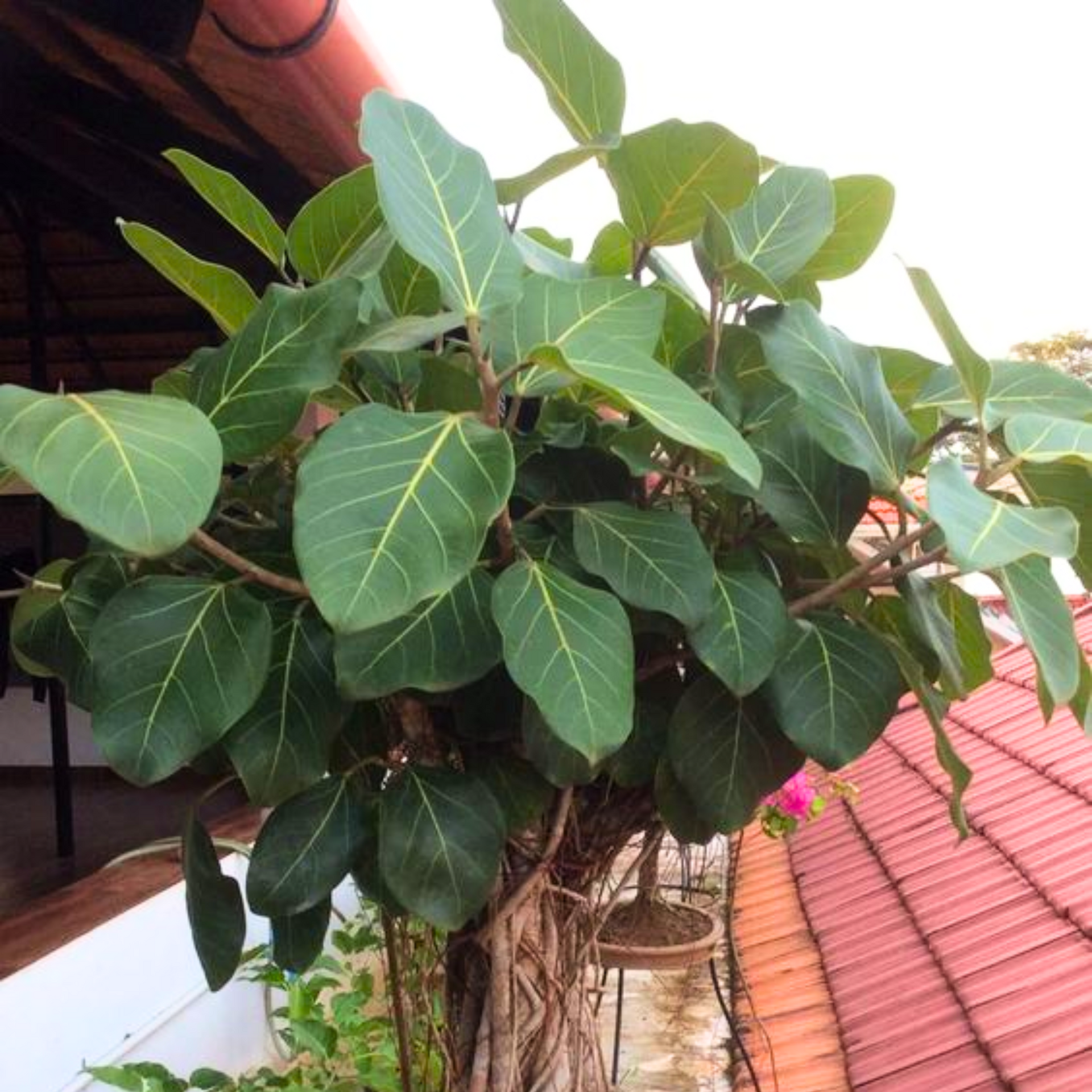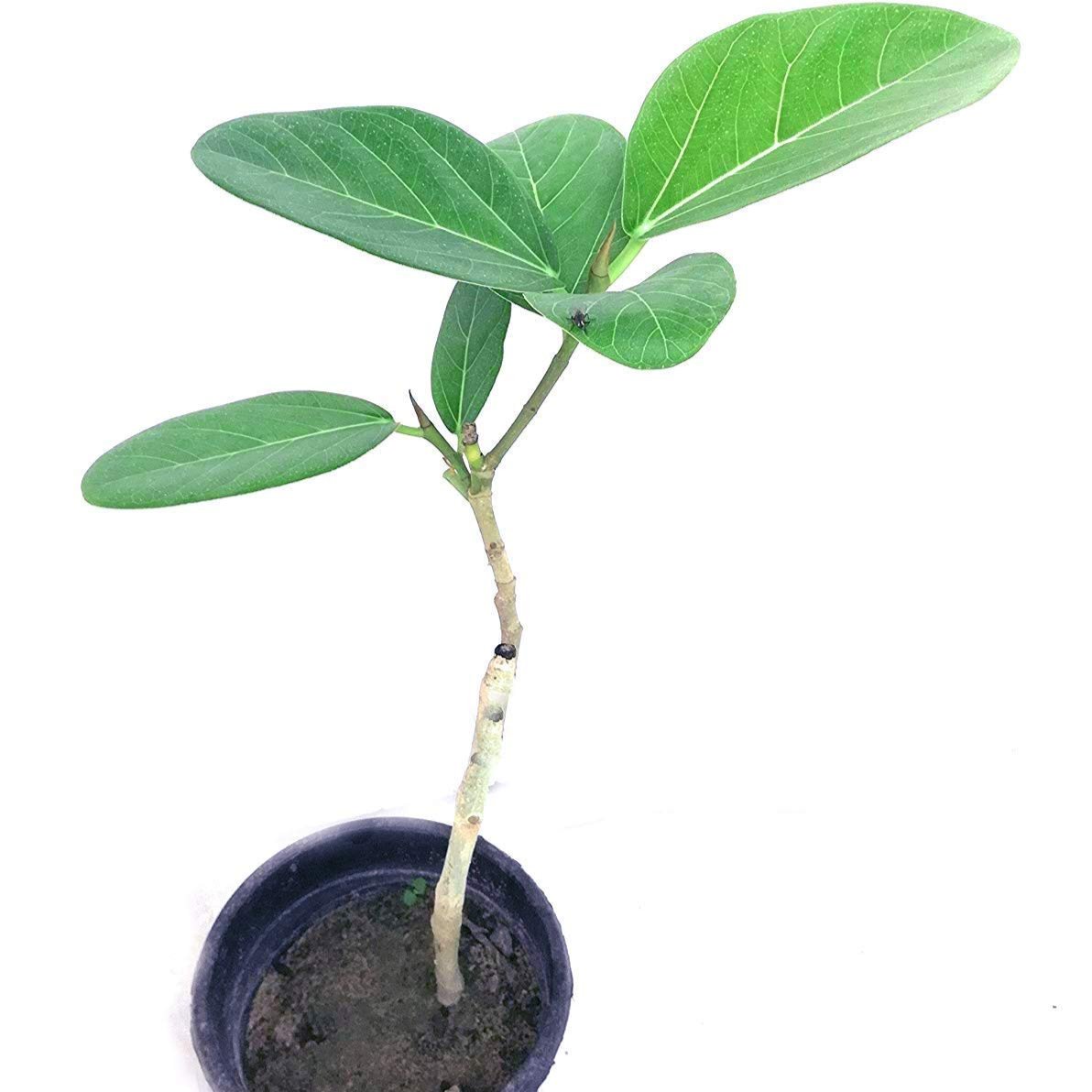


Green Paradise Offers Healthy Banyan
Tree Sapling PLant
About Banyan Tree Sapling Plant
Banyan Plant, commonly known as the Indian banyan, is a species of fig tree native to the Indian subcontinent and parts of Southeast Asia. It belongs to the family Moraceae and is one of the largest trees in the world.
Here are some key features and information about the Banyan Plant:
Size and Growth:
-
The Banyan tree is renowned for its massive size and aerial roots.
-
It has a sprawling growth habit, with branches that extend horizontally and eventually develop aerial roots that grow toward the ground.
-
These roots can anchor themselves and become secondary trunks, making the tree appear as if it has multiple trunks.
Canopy and Leaves:
-
The Banyan tree has a wide, dense canopy that provides excellent shade.
-
The leaves are elliptical in shape and glossy green, with prominent veins.
-
They are approximately 6-10 inches long and arranged alternately on the branches.
Aerial Roots:
-
One of the most distinctive features of the Banyan tree is its aerial roots.
-
These roots emerge from the branches and droop to the earth.
-
When they reach the ground, they can penetrate the soil and develop into woody trunks,
-
giving the tree additional support and stability.
Trunk and Bark:
-
The trunk of the Banyan tree is thick and has a characteristic grayish-brown bark with numerous aerial root scars.
-
As the tree grows and develops more aerial roots, the trunk can become very wide and give the appearance of multiple trunks fused together.
Fig Fruits:
-
Like other members of the Ficus genus, the Banyan tree produces small fig-like fruits known as syconia.
-
These fruits are round and green when young,
-
turning purplish-black as they ripen.
-
Inside each syconium, there are many tiny flowers.
Cultural and Religious Significance:
-
The Banyan tree holds great cultural and religious significance in various traditions.
-
In Hindu mythology, it is considered sacred and symbolizes eternal life.
-
Many temples and religious sites in India are located under the shade of Banyan trees.
Ecological Importance:
-
Banyan trees play a vital role in the ecosystem by providing habitat and food for numerous organisms.
-
The dense canopy offers shelter to birds, insects, and small mammals.
-
The fruits are eaten by birds and animals, helping in seed dispersal.
Adaptability:
-
Banyan Plant is a hardy and adaptable species.
-
It can tolerate a wide range of soil types, including rocky or poor soils.
-
It is also resistant to drought and can survive in both tropical and subtropical climates.
Landscaping and Urban Use:
-
Due to its majestic appearance and shade-giving qualities.
-
the Banyan tree is often planted in parks, gardens, and along avenues to enhance the landscape and provide shade in urban areas.
It's important to note that while the Banyan tree is a beautiful and culturally significant plant, its size and growth habits make it unsuitable for small gardens or confined spaces.
How To Grow Banyan Plant
Growing a banyan plant can be an enjoyable and rewarding experience. Banyan trees are known for their large canopy and aerial roots, which give them a unique appearance.
Here's a step-by-step guide on how to grow a banyan plant:
Obtaining a Banyan Plant:
-
Purchase a banyan plant sapling or acquire seeds from a reputable nursery or online source.
-
Alternatively, you can collect seeds from a mature banyan tree if available in your area.
Choosing the Planting Location:
-
Banyan trees thrive in warm, tropical climates, but they can also be grown in large containers indoors or in greenhouses in cooler regions.
-
Select a location that receives plenty of sunlight, as banyan trees require full sun exposure for optimal growth.
-
Ensure there is enough space for the tree to grow to its full potential, as banyans can become quite large.
Planting in the Ground:
-
If planting in the ground, prepare a hole that is twice as wide and deep as the root ball of the sapling.
-
Loosen the soil in the hole to encourage proper root growth and drainage.
-
Make sure the root ball's top is level with the ground before inserting the sapling into the hole.
-
Soil is used to backfill the hole; air pockets are removed by gently pressing the soil down.
Planting in Containers:
-
Choose a large container with adequate drainage holes to accommodate the root growth of the banyan tree.
-
Fill the container with a well-draining potting mix, preferably a mix of loam, peat moss, and sand.
-
Plant the sapling in the container, ensuring it is positioned at the same depth as it was in the nursery pot.
-
After planting, give the plant plenty of water to help the soil settle.
Watering:
-
Banyan trees prefer consistently moist soil but should not be waterlogged.
-
Water the tree regularly, especially during dry periods.
-
Allow the top few inches of soil to dry out slightly between waterings to prevent overwatering.
-
Avoid letting the soil become completely dry or waterlogged, as both conditions can harm the tree.
Fertilizing:
-
Apply a balanced, slow-release fertilizer formulated for trees in the spring,
-
following the package instructions.
-
Alternatively, use a liquid fertilizer every two to four weeks during the growing season.
-
Avoid over-fertilizing, as excessive nutrients can cause the tree to grow too rapidly and become weak.
Pruning:
-
Prune the banyan tree during its dormant season to remove dead, damaged, or diseased branches.
-
Regular pruning will help maintain the tree's shape and size and promote better airflow and light penetration.
-
Be cautious not to prune too heavily,
-
as banyans have a vigorous growth response and can become stressed if pruned excessively.
Aerial Root Care:
-
Banyan trees are known for their aerial roots, which can develop over time.
-
If the tree develops aerial roots, you can guide them toward the ground or a container filled with soil.
-
Once the aerial roots touch the ground or the container, they can take root and further support the tree's growth.
Remember that growing a banyan tree requires patience, as it is a slow-growing species. With proper care, you can enjoy the majestic beauty of a mature banyan tree in your garden or as a striking indoor feature.




